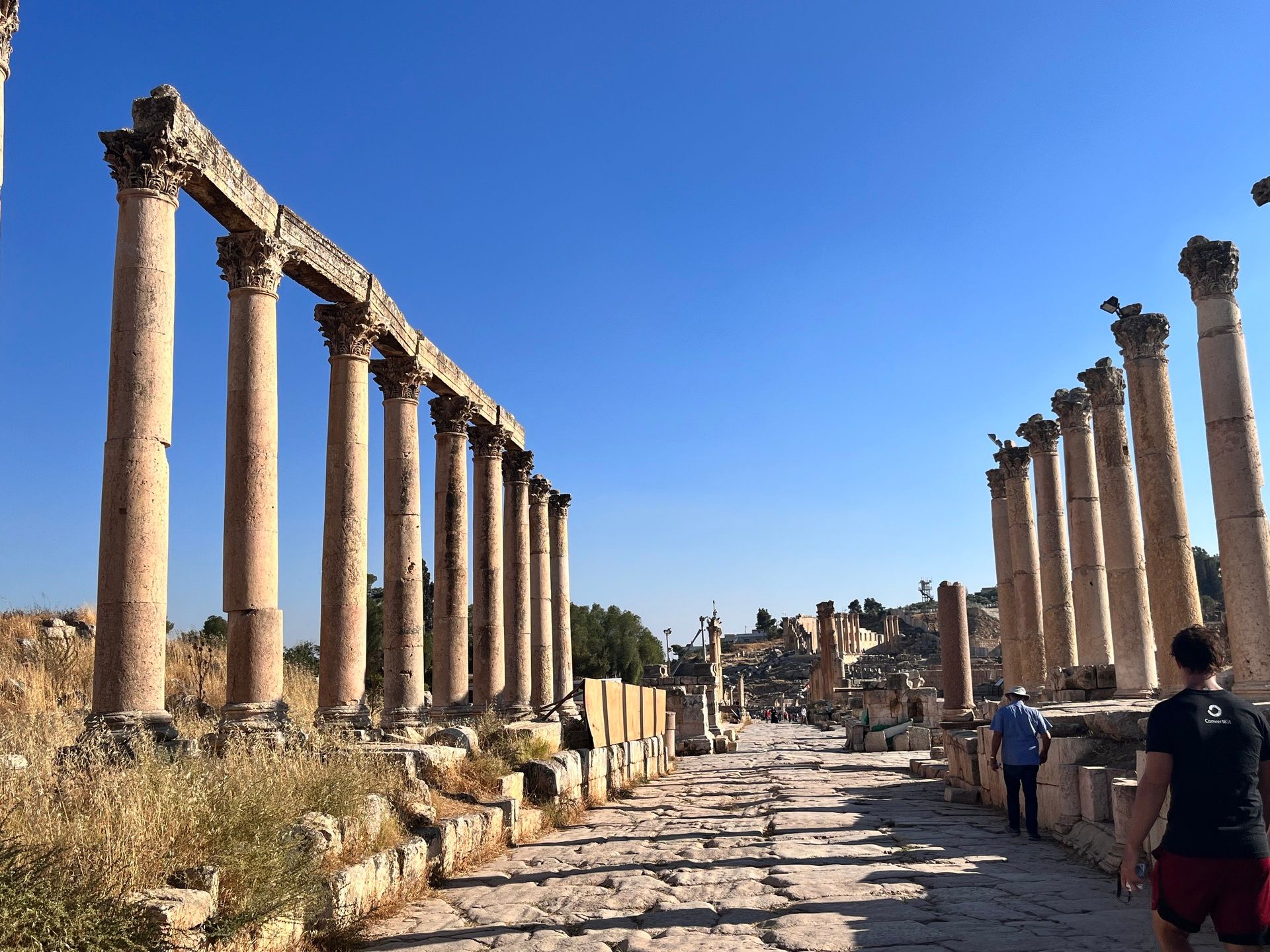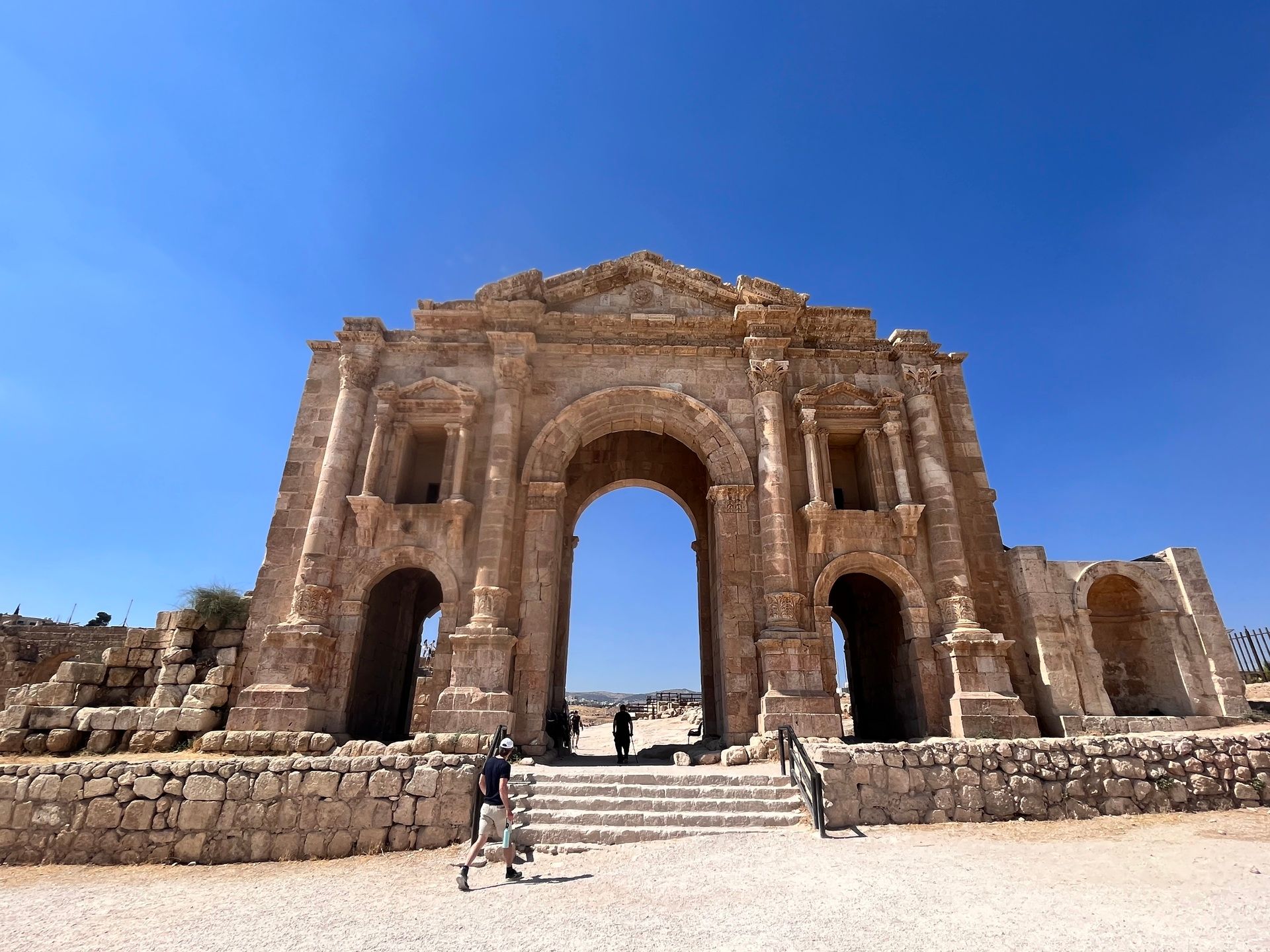- Passport Inspiration
- Posts
- Ancient Ruins You Can Move
Ancient Ruins You Can Move
Jerash, Jordan
Happy Monday traveler!
This week, we’re taking you to Jerash, Jordan where some of the best preserved ancient Roman ruins can be found. Get ready to stroll through time and literally move it.
🌍️ What’s Going on In the Travel World?
Google Flights Introduces New AI Tool - now this is terrific use case for AI!
This is the best city in the world for 20-somethings, according to Time Out - Cape Town is so on our list
Why sweating might get you pulled over at airport security - Bob still gets nervous every time we fly but not to the point of sweating 😰
As Everest costs go up, Nepal just made it free to climb nearly 100 other mountains - we’d love to see Everest, but the hike might not be worth it, there are plenty of other options for the adventurer
Jordan: The quirkiest destination in the Middle East - well, this is perfect…
A message from Passport Inspiration
Looking to plan an inspiring adventure right now?
Planning an international trip can be overwhelming but it doesn’t have to be.
How?
You just need a plan for your plan.
It’s important to prepare with enough time for things like:
Visas
Dining
Lodging
Passports
Excursions
Travel Arrangements
If you want a head start planning, we can help you prepare for an amazing trip.
🙌🏼This Week’s Inspiration
Jerash, Jordan is home to one of the best-preserved Roman archaeological sites in the world. It flourished between the 1st and 3rd centuries A.D. During this period, it saw major construction projects: roads, temples, theaters, bathhouses, fountains, and colonnaded streets. They showcased Roman urban planning and architectural skill. At its peak, the city may have had a population of 20,000–25,000 people.
We had never heard of Jerash until it became a stop on the itinerary for our stay in Jordan. There is nothing like walking along original Roman roads, explore majestic arches and theaters, and stand in the center of the stunning Oval Plaza, all surrounded by rolling hills and olive groves.

Zoom in to see the crevices from wheels and carts
Jerash is a remarkable blend of ancient history and natural beauty that offers a vivid glimpse into life over 2,000 years ago. It was hard not to be inspired when standing next to this remarkable architecture. Hadrian’s Arch marks the south entrance to the city. It stands about 22 meters tall.

Hadrian’s Arch - built around 129-130 A.D.
Making History Move…Literally
The Temple of Artemis was dedicated to the city’s patron goddess and is one of the most impressive structures in the ancient city. Its towering Corinthian columns still stand today, and what's really wild is that they can actually move.
Our guide pushed one of the columns and had us put our fingers in the cracks. We could see and feel the column move.
The incredible engineering pieced these columns together using liquid metal and not cement. This has allowed these pillars to sway without collapsing. They have withstood earthquakes, strong winds, etc. for the past 2,000 years. It’s one of those little details that makes Jerash feel alive, even after thousands of years.

The Temple of Artemis
Where You Can Hear a Whisper
There are two ancient theatres here in Jerash where there is no bad seat.
These theatres were carefully designed so that a whisper from onstage can be heard from the very top row. We tested this out and sure enough, it was fascinating hearing the acoustics without the use of a microphone.

The South Theatre - can seat 3,000 people
Like many Roman cities, Jerash began to decline in the late 3rd and 4th centuries, partly due to economic shifts and regional instability.
A major earthquake in 749 AD devastated much of the city, causing widespread destruction. After that, Jerash fell into relative obscurity, with only scattered settlement and occasional use, until it was “rediscovered” by western travelers in the 19th century.
Excavations began in the early 20th century and continue today, revealing one of the best-preserved Roman cities in the world. Jerash is now Jordan’s second most-visited archaeological site after Petra.
How to Get to Jerash:
Getting to Jerash is easy and makes for a perfect day trip from Amman, Jordan’s capital.
The ancient city lies just 48 kilometers (30 miles) north of Amman, and the drive typically takes about 45 minutes to an hour.
You can rent a car and drive yourself via Highway 35 (also known as the King’s Highway), which is well-paved and scenic.
Alternatively, you can take a taxi or book a guided tour, many of which include transportation and a knowledgeable guide. Once you arrive, the archaeological site is easily walkable, with plenty of signage and opportunities for guided exploration.
Where to Stay:
Here is where we recommend staying while in or near Jerash:
Hadrian’s Gate Hotel - just a 5-minute walk to the entrance for the ruins
Crown Plaza Amman -located in the capital city of Amman
Opal Hotel Amman - near the Amman airport
What to Eat:
Jordanian cuisine is rich, flavorful, and deeply tied to tradition.
The country’s national dish, mansaf, is a must-try — it’s made of tender lamb cooked in a tangy yogurt sauce and served over rice with flatbread.
You’ll also find delicious street food like falafel, hummus, and shawarma, often paired with fresh vegetables and pickles.
For something hearty, try maqluba, a spiced rice and meat dish flipped upside down when served.
And don’t skip kanafeh, a sweet and cheesy dessert soaked in syrup — it’s a local favorite.
What to Pack:
We recommend packing comfortable walking shoes while visiting Jerash. The ruins are expansive with lots of uneven stone paths. You’ll definitely want sun protection such as a hat, sunglasses, and sunscreen. The sun can be intense, especially in summer.
Dress in light layers. The days can be hot, but mornings and evenings are cooler, especially outside summer months.
Bring a reusable water bottle to stay hydrated while exploring. You’ll definitely want a camera or phone with good battery life: The photo opportunities here are endless.
👋 Have an Inspiring Week
Here are a few of our affiliate links to help you when in and near Jerash. It’s no extra cost to you and helps us keep this email free for everyone. 😀
From Amman- private Jerash tour
Three day tour featuring Jerash, Petra, Wadi-Rum and the Dead Sea
Full day tour of Jerash and Amman
This backpack - perfect for traveling
See you next week,
Trisha & Bob
🤔 What do you think of the newsletter? |